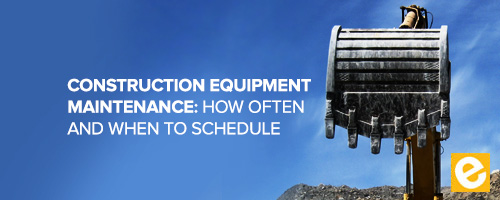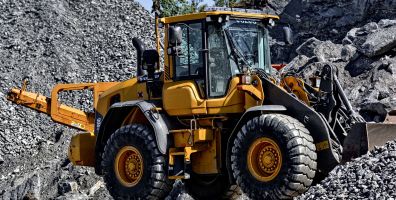
Construction Equipment Maintenance: How Often and When to Schedule
Construction Equipment Maintenance: How Often and When to Schedule
Equipment failure can cost businesses hundreds, even thousands, of dollars every day they’re out of service. That’s why it’s especially important to have a construction equipment maintenance schedule. Without one, it’s easy to end up with unexpected downtime on jobs and an excess cost to you. While preventative maintenance schedules can be kind of a pain and can be hard to plan around jobs, prioritizing construction equipment maintenance can prevent larger costs in the future.

Table of Contents
Why Schedule Construction Equipment Maintenance
The biggest reason to schedule construction equipment maintenance is that it controls costs. Well maintained vehicles and other equipment types minimize repair and downtime costs because parts are regularly checked. So you’ll know ahead of time if something needs to be replaced and can schedule it before it becomes an issue. Regular maintenance also helps to lengthen equipment life, keep equipment under warranty, and control service intervals. With that in mind, it’s important to discover how often and when to schedule preventative maintenance.
Vehicles
Fleet maintenance is important in construction. They can be your greatest tool and when taken care of properly, run for thousands of miles. Simple things like checking oil, water, wiper fluid, engine coolant, anti-freeze and tire condition every time you fill up can keep the vehicles in better condition for longer. Most vehicles do best with regular checks, such as:
Once a Month – Check transmission fluid, brake fluid, windshield wiper blades, power steering fluid. It’s also a good idea to check the condition of belts, hoses, and battery cables.
Every 6 Months or 5000 miles – Checking the brake system, inspecting or rotating tires (depending on your manufacturer recommendations), chassis lubrication, and reviewing the clutch system for manual vehicles.
Every Year – Have the under-body flushed, service the engine cooling system, check the accelerator control system, and lubricate the doors, locks, hinges, and parking breaks. (inspecting radiator, water pump, fan belt, thermostats, radiator cap and antifreeze)
Every 15,000 miles – Inspecting the automatic transmission, as well as changing the transmission fluid and filter (if applicable).
Every 30,000 miles – Checking the spark plugs, fuel filter, spark plug wires, and engine timing.
While these tips are pretty general, every vehicle manufacturer might have a different timeline which is why it’s important to look at the manuals to know their recommendation. You can visit the company websites to schedule service with their local professionals.
Construction Equipment Maintenance
It’s extraordinarily important to schedule maintenance for construction equipment. A study on machine maintenance by both Virginia Tech and Virginia State said that repair costs are reduced by 25% when people regularly schedule maintenance. While exact maintenance schedules can be found in owner manuals, there are some general tips with maintenance and scheduling.
It’s important to take weather and site conditions into your maintenance plan. Because weather and site conditions change how often and when construction equipment maintenance should be scheduled. In places with acidic soil or salting, it’s important to address this in your maintenance plan. Otherwise important parts of the equipment could end up rusting or corroding and cause unexpected maintenance needs.
Another way to keep construction equipment maintenance needs low is to ensure that everyone operating a piece of equipment is certified or knowledgeable on effective machinery. Operators know how to run and start the machine, as well as the preventative maintenance checklist. They know what tasks need to be completed in order to ensure the machines work properly every day. They also know when something isn’t right and can point to specific parts or pieces that might not be functioning properly. Finally investing in monitoring equipment, or borrowing monitoring equipment, to regularly check your equipment goes a long way. You can use the reports from past maintenance to fix current problems.
Conclusion
Many companies offer construction equipment maintenance packages that will check fluids, inspect equipment, and assess the site. They can help determine the necessary course of action to keep your equipment in the field longer. Other ways to manage construction equipment maintenance is through scheduling. Many service providers have online scheduling that allows for people to schedule maintenance ahead of time and around your project schedule. With all the benefits from regular maintenance it’s easy to see why businesses should have maintenance schedules.
Sources:
GM Maintenance Schedule